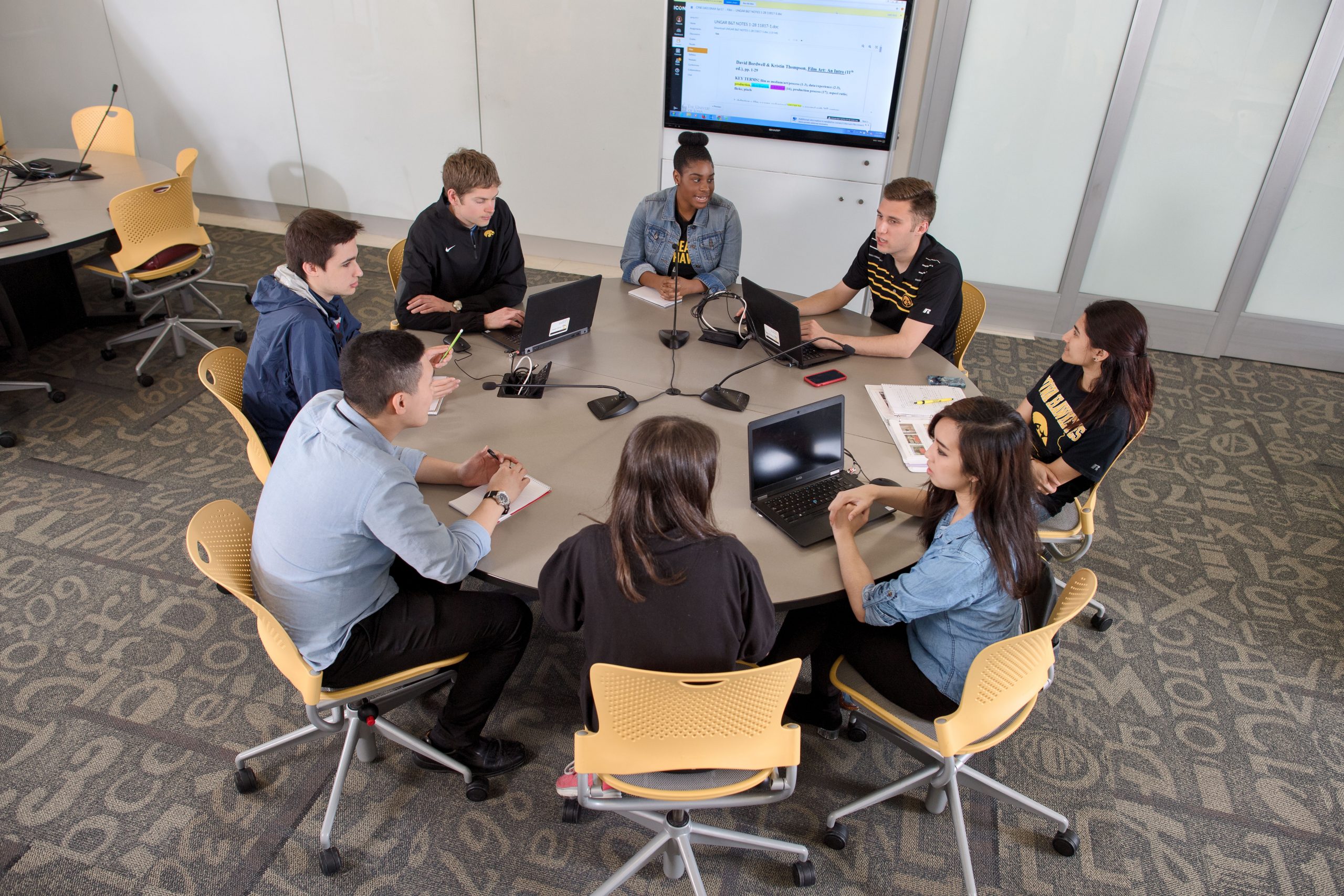3 Becoming familiar with your classroom

Where you teach contributes to your class’s climate; leveraging your physical space well can help create an inclusive experience for your students.
💡 Please reflect:
UI classrooms are assigned in advance through the Office of the Registrar. Once you know which classroom you will be teaching in, we encourage you to learn about the classroom online and visit your classroom to inform your teaching plans:
- What is the chair arrangement in the classroom? Can you move the chairs and tables? If so, what arrangement would be most conducive to student learning? Many instructors regularly rearrange movable furniture to accommodate learning activities throughout the semester.
- Can you move around the space? Will it be possible to make eye contact with every student in the class?
- Where will you want students to sit in a large classroom? Are there any seats where visibility or accessibility might be a concern?
- If you are in a lab, is the safety equipment easily accessible and up to date?
- Will you have access to the teaching technologies you need, and do they work? For example, many instructors access files, project PowerPoints, share content via a document camera, or (in larger spaces) use a microphone. All UIowa classrooms have new wireless content sharing technology (Solstice) that allows students to project their own devices.
- If the assigned room is unsuitable for you or your students, ask your administrative services coordinator; another more appropriate room may be available.
Many UI instructors like to teach in TILE (Transform, Interact, Learn, Engage) classrooms, which are specially designed to support active learning and student collaboration with features like whiteboards and round tables. Learn more about TILE, including the requirements for requesting a TILE classroom. If you are interested in teaching in a TILE classroom, self-enroll in this ICON course.
Sometimes classroom furniture or technology may not work as planned. The ITS Help Desk may be able to help you fix the issue quickly over the phone. Even if the issue does not affect your course that day, it is important to report any concerns so that technical experts can address the problem for your next class and for other instructors and learners. You can also request a consultation on classroom technology from OTLT Learning Spaces Technology.
Classroom spaces are not neutral; how you position yourself and your students in the room can shape or shift students’ understanding of accessibility and who is expected to contribute and how.
During the first days of class, some Iowa instructors conduct an exercise in which students think about the room as a significant component of their learning community and share what they noticed in the room and what impact they might have on learning, belonging, and group dynamics.
💡 Please reflect:

Feedback/Errata